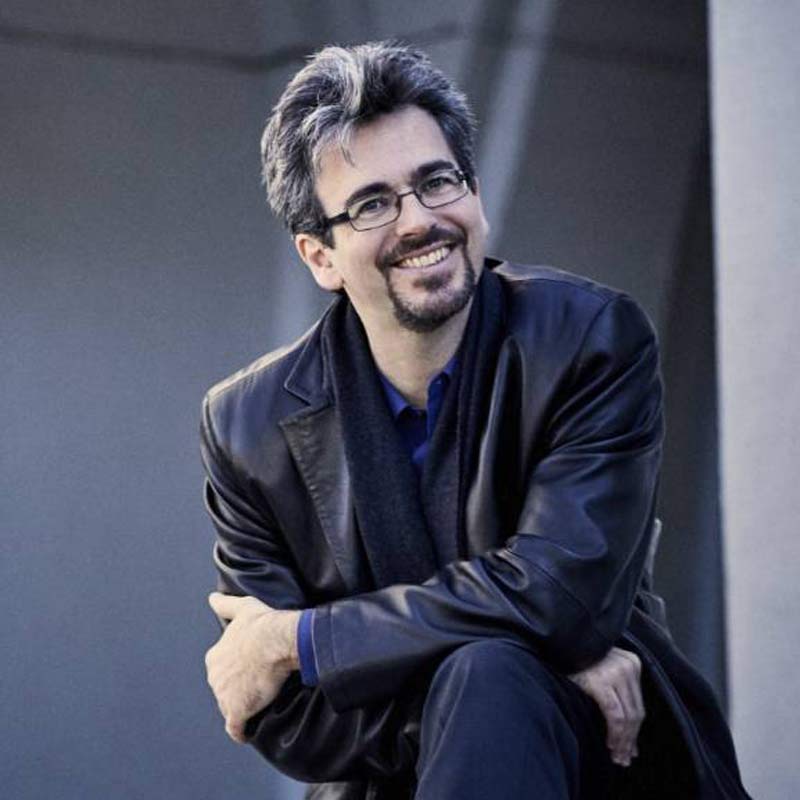Daniel del Pino | Sunday, August 28, 2022 | Salon Piano Series | Masterclass in Madison, WI

Daniel del Pino
Masterclass: Sunday, August 28, 2022
Program
-
Joseph Haydn: Piano Sonata in E Major HobXVI/31
I. Moderato
II. Allegretto
III. Presto
Jason Xue, a current student of Christopher Taylor, is double majoring in Piano Performance and Environmental Sciences at UW Madison. Jason won the Concord Chamber Orchestra Concerto Competition in Milwaukee with his performance of Rachmaninov’s first Piano Concerto in f# minor and additionally, was a finalist in UW Madison’s Orchestral Concerto Competition. Jason is passionate about learning and playing and is excited with his current path. -
Enrique Granados: Spanish Dance Op 5 # 5 Andaluza
Craig Nielsen is 17 years old and has studied piano for eleven years, the last seven with Dr. Denise Taylor. Craig is starting his senior year at Middleton High School where he is celebrating his 7th year of string bass playing in the orchestra. Craig’s main interests for potential career paths are Statistics and Data Science and other academic interests include Political Science and Music. -
Percy Grainger: Scotch Strathspey and Reel
Michael Wu graduated from the Sun Prairie High School and is now a sophomore at the University of WI Madison, pursuing a double major in Piano Performance and Neurobiology. Michael currently studies piano with Christopher Taylor. Michael won First Prize in the 2020 Bolz Young Artist Competition and was winner of the 2021 Irving Shain Beethoven Competition. He is currently sponsored by Dr. Kato Perlman as pianist for the prestigious Perlman Trio. Outside of music, Michael enjoys good food and long walks.
Masterclass Review
All three performances heralded excellent tips and advice for further advancement of pieces. Commentary on all three can be summarized and easily applied to any piece that a pianist is working on. The best tip? SING. Sing with your music to help with phrasing; and listen.
1) When performing a piece written during a time of smaller and more delicate instruments, always try to convey that which the composer meant back then, to our larger and modern day instruments, of today. Practice on an electric keyboard was suggested to “hear” the sustained layers of notes and how they come together as voices that resolve, rather than just, harmonic chords. Singing always helps with directional playing and phrasing! The topic of repeated sections was especially interesting as Daniel encouraged playing the repeats, differently, as this is what would have been expected in classical times. Improvise on the repeats with ornaments or contrasting dynamics; sound improvisatory. Use a bit of timing within or at ends of phrases to make for a more special moment; perhaps a breadth. Pedal contributes to more resonance and employs more contrast to bring additional interest to the performance. Think of how the text would be spoken, or sung, and transfer it to your fingers. Make your fingers sound as though they are communicating.
2) Elements of Spanish music include a “harsh” style of singing, an abrupt and aggressive style of dancing, and very colorful dresses/costuming. Think FLAMENCO. The guitar is a very important instrument in Spanish music and we can be inspired by these elements to perform music of Granados with more authenticism. Granados should be loosely interpreted with musical markings, meaning, do not be too strict in your approach. Transfer of weight through the fingers was talked of, including use of arm weight to better voice the melody. Shaping octave phrases with tempo and dynamics will be easier to assimilate a legato touch. Listen for horizontal movement as octaves can dangerously sound vertical. In the Spanish language, accents are very important, as in the music. Choose where you will put the accents, and make sure to not play notes too loudly that do not belong to the melody. In regards to the pedal, the best pedal is when you do not hear it. It should not be thought of as an “on and off switch”. Experiment with varying degrees of pressure to the pedal for various shades of color. Try to find that “sweet spot” within all the layers of pedal. Learning to use the pedal itself is a life long endeavor. Lastly, be more organic with your ritardandos. They shouldn’t be abrupt, but more of a natural, slowing of events.
3) Michael gave us a brief intro to Grainger and performed a piece that literally, no one knew. As with the other two pieces, layers of voicing and listening to inner voices within the complexities of notes and rhythms was addressed. The use of timing, shaping phrases and creating more space between the layers, will catch the audience’s attention. Experimenting with the varying degrees of pedal was addressed. Talk of using some forearm versus just fingering, wrist choreography, and other technical aspects were brought up to help with the stride accompaniment.
